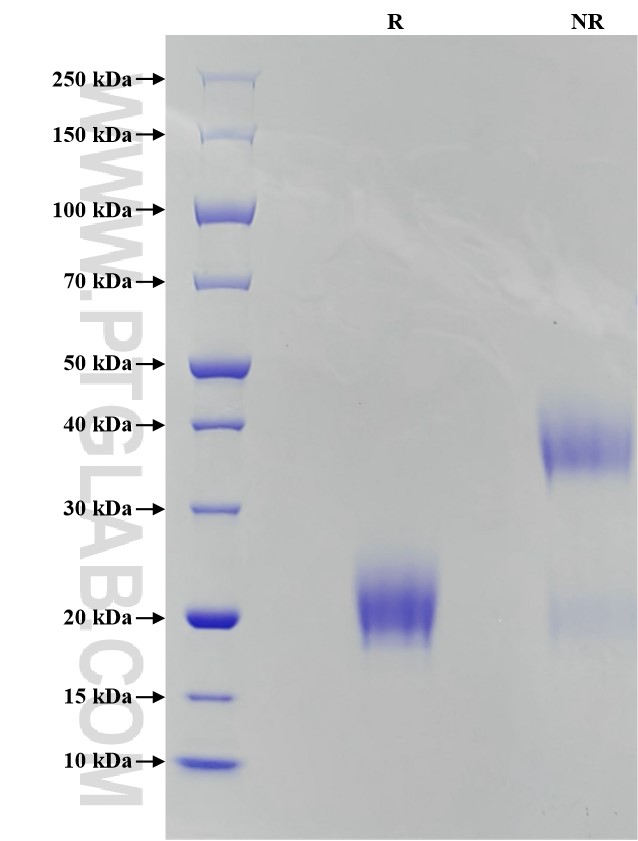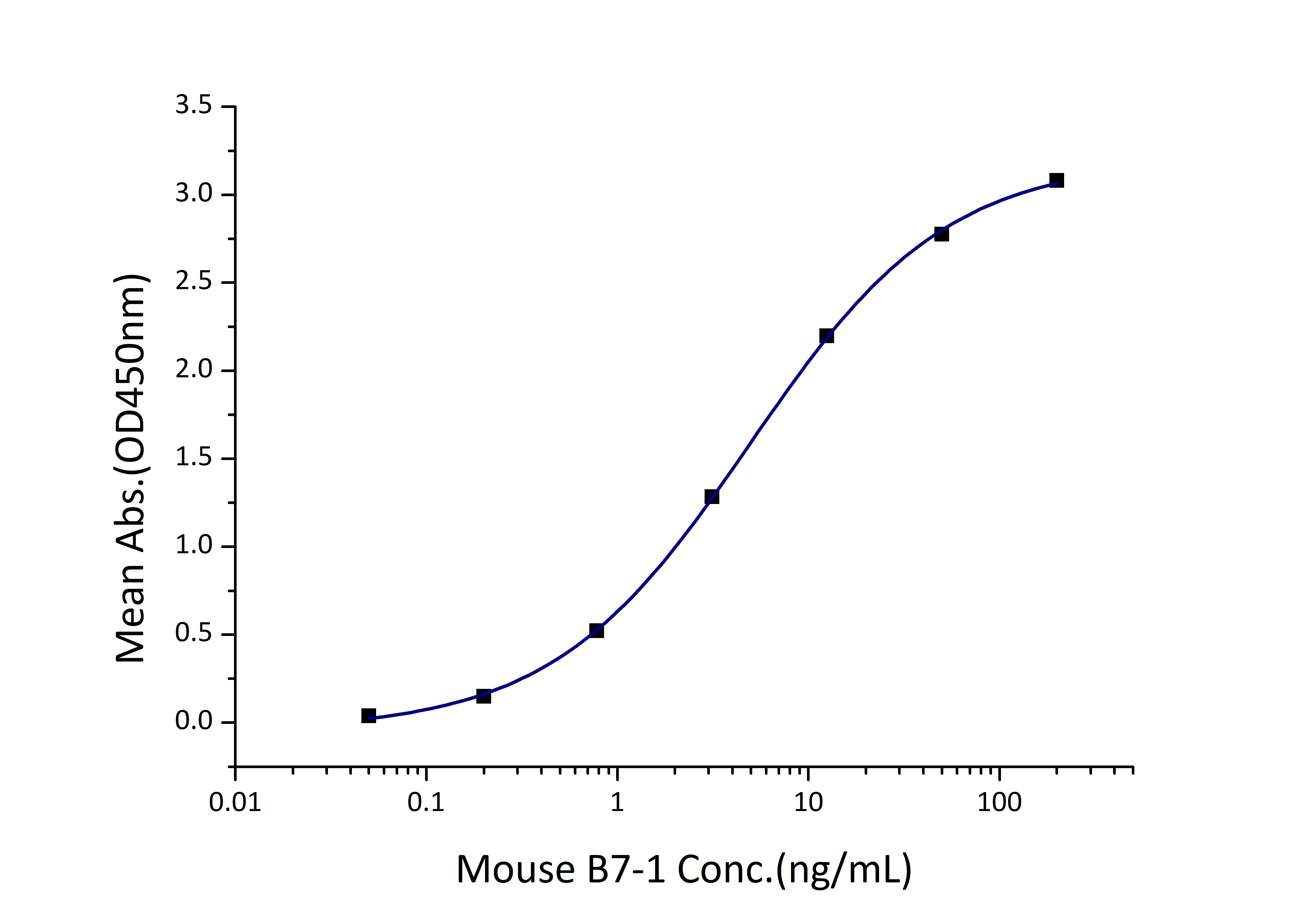Recombinant Mouse CTLA-4 protein (His Tag)
种属
Mouse
纯度
>95 %, SDS-PAGE
标签
His Tag
生物活性
EC50: 2-9 μg/mL
验证数据展示
产品信息
| 纯度 | >95 %, SDS-PAGE |
| 内毒素 | <0.1 EU/μg protein, LAL method |
| 生物活性 |
Immobilized Mouse CTLA-4 (His tag) at 0.5 μg/mL (100 μL/well) can bind Mouse B7-1 (Myc tag, His tag, Fc tag) with a linear range of 2-9 ng/mL. |
| 来源 | HEK293-derived Mouse CTLA-4 protein Glu36-Phe162 (Accession# NP_033973) with His tag at the C-terminus. |
| 基因ID | 12477 |
| 蛋白编号 | NP_033973 |
| 预测分子量 | 14.8 kDa |
| SDS-PAGE | 18-23 kDa, reducing (R) conditions |
| 组分 | Lyophilized from 0.22 μm filtered solution in PBS, pH 7.4. Normally 5% trehalose and 5% mannitol are added as protectants before lyophilization. |
| 复溶 | Briefly centrifuge the tube before opening. Reconstitute at 0.1-0.5 mg/mL in sterile water. |
| 储存条件 |
It is recommended that the protein be aliquoted for optimal storage. Avoid repeated freeze-thaw cycles.
|
| 运输条件 | The product is shipped at ambient temperature. Upon receipt, store it immediately at the recommended temperature. |
背景信息
CTLA-4, also known as CD152, belonging to the immunoglobulin superfamily, is primarily found on activated T cells and regulatory T cells (Tregs). CTLA-4 is closely related to the T-cell costimulatory CD28, and both molecules bind to B7-1 and B7-2 on antigen-presenting cells. CTLA-4 acts as a negative regulatory molecule of T-cell responses. Besides the full-length transmembrane form, CTLA-4 also exists in a truncated soluble form (sCTLA-4).
参考文献:
1. Brunet JF, et al. (1987) Nature. 328(6127):267-70. 2. Harper K, et al. (1991) J Immunol. 147(3):1037-44. 3. McCoy KD, et al. (1999) Immunol Cell Biol. 77(1):1-10. 4. Oaks MK, et al. (2000) Cell Immunol. 201(2):144-53.



